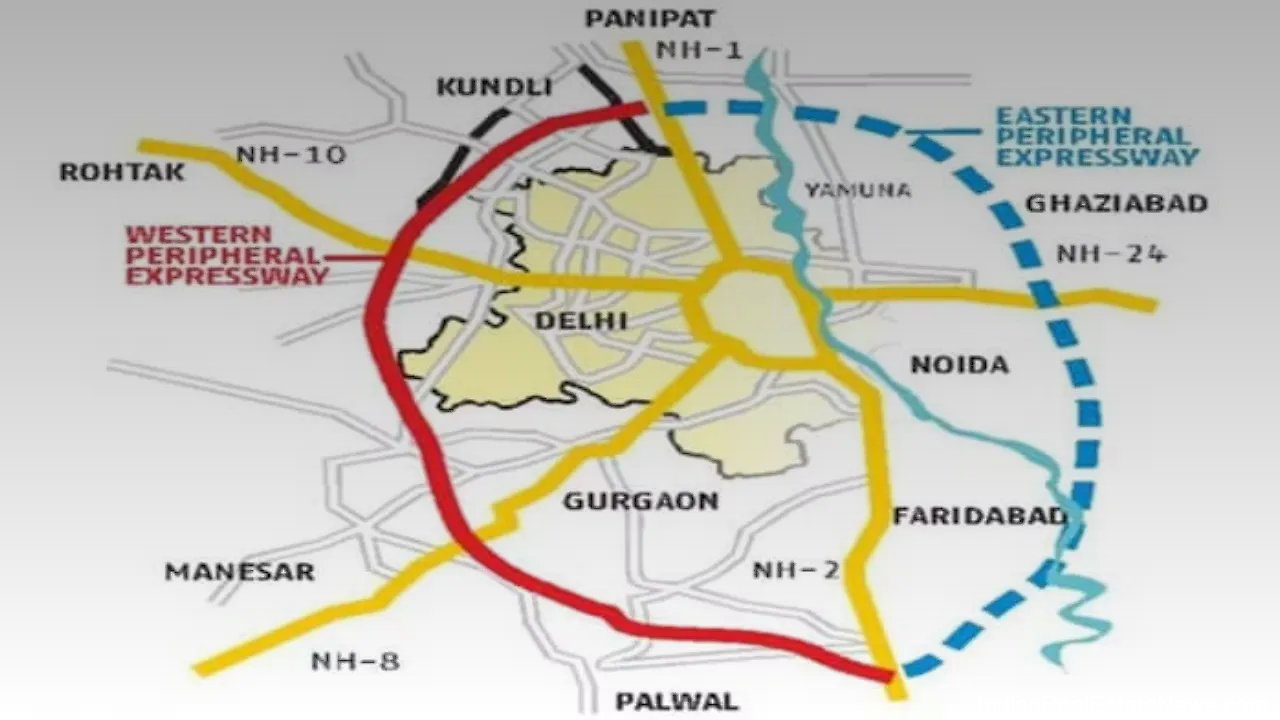The Eastern Peripheral Expressway (EPE) stands as a testament to India’s evolving infrastructure landscape. Strategically designed to connect crucial regions like Noida, Faridabad, and Ghaziabad to the bustling Delhi-NCR, it promises to revolutionize the way commuters navigate this densely populated area. With its completion, the EPE not only aids in decongesting the inner city traffic but also paves the way for enhanced economic activities across the connected regions.
Overview of the Eastern Peripheral Expressway
Initiated as a part of the ambitious highway development projects by the Indian government, the Eastern Peripheral Expressway is a meticulously planned corridor. It stretches over 135 kilometers, providing an uninterrupted travel experience around the eastern periphery of the National Capital Region.
| Quick Facts | Details |
|---|---|
| Total Length | 135 kilometers |
| Connected Regions | Noida, Faridabad, Ghaziabad, and Delhi-NCR |
| Construction Cost | INR 11,000 Crores |
| Key Benefits | Reduced traffic congestion, enhanced connectivity, economic growth |
Benefits of the Eastern Peripheral Expressway
The expressway is designed to alleviate the pressure on Delhi’s roads by offering an alternative route for vehicles not destined for the capital. This strategic redirection helps in reducing pollution levels and improving the quality of life for Delhi’s residents. The infrastructure is also poised to significantly reduce travel time between the connected cities, fostering better economic ties and commuter convenience.
- Reduced Congestion: By rerouting heavy traffic away from the city center, the EPE helps minimize traffic jams and pollution.
- Economic Impact: Enhanced connectivity promotes trade and business activities, facilitating better economic integration.
- Environmental Benefits: The expressway’s design incorporates green belts and solar power, contributing to sustainability efforts.
Officials Speak on the Project
“The Eastern Peripheral Expressway is a game changer for the National Capital Region. It not only eases traffic congestion but also catalyzes economic growth by improving connectivity.” – An official from the Ministry of Road Transport and Highways.
5-Question FAQ on the Eastern Peripheral Expressway
Q1: What is the main purpose of the Eastern Peripheral Expressway?
A: The primary goal of the EPE is to divert traffic not destined for Delhi, thus reducing congestion and pollution in the capital.
Q2: How long is the Eastern Peripheral Expressway?
A: The expressway spans a length of 135 kilometers, connecting the eastern periphery of Delhi-NCR.
Q3: What regions does the EPE connect?
A: The EPE connects Noida, Faridabad, and Ghaziabad to the Delhi-NCR region.
Q4: What are the environmental benefits of the expressway?
A: The expressway incorporates green belts and uses solar power, contributing to reduced emissions and promoting sustainability.
Q5: How does the EPE impact local economies?
A: By improving connectivity, the EPE facilitates trade and business, which can lead to economic growth in the connected regions.
In conclusion, the Eastern Peripheral Expressway is more than just a roadway; it is a vital infrastructure project that enhances connectivity, drives economic growth, and promotes sustainable practices in one of India’s most bustling regions. As the expressway continues to serve its purpose, its impact will be felt across various sectors, from real estate to retail, reinforcing the importance of visionary infrastructure in national development.
